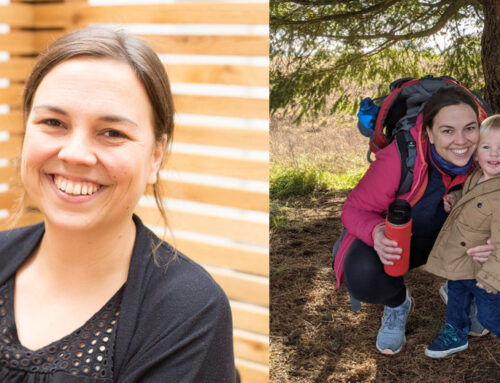It’s tempting to kick off your shoes and toss your coat aside when you walk in the door, but beware of the entryway chaos that ensues. If a pile up of backpacks, dog leashes, and mail by the front door has ever made you question your sanity, then it might be time to get clean with a mudroom.
What is a mudroom, exactly? Typically, it’s an area by the front or back door where you can store things. People utilize mudrooms in different ways, but a lot of families use them to store shoes, jackets, and outdoor wear to keep mud and grime from spreading to the rest of the house. Many older homes don’t have mudrooms, so they are often requested during a remodel.
Mudrooms come in all shapes and sizes and don’t even have to be a room at all. Depending on the home and the wish list, a mudroom can be as simple as a few hooks and a shelf to a fully equipped laundry/mudroom hybrid. No matter where your needs fall on this spectrum, here are a few key takeaways for creating a mudroom that keeps your family organized.
It doesn’t take much
It’s amazing how helpful even a small space can be to corral life’s clutter. A mirror, a small charging station, hooks for a purse, and a bench to set groceries on helps ease the coming and going from your home. Not only does it improve function, it gives a visual sense of entry. This is true even if your home doesn’t feature a grand entrance area. The key is establishing the space with proximity to the door you use most.
“It’s amazing how a small space can Help corral life’s clutter.”
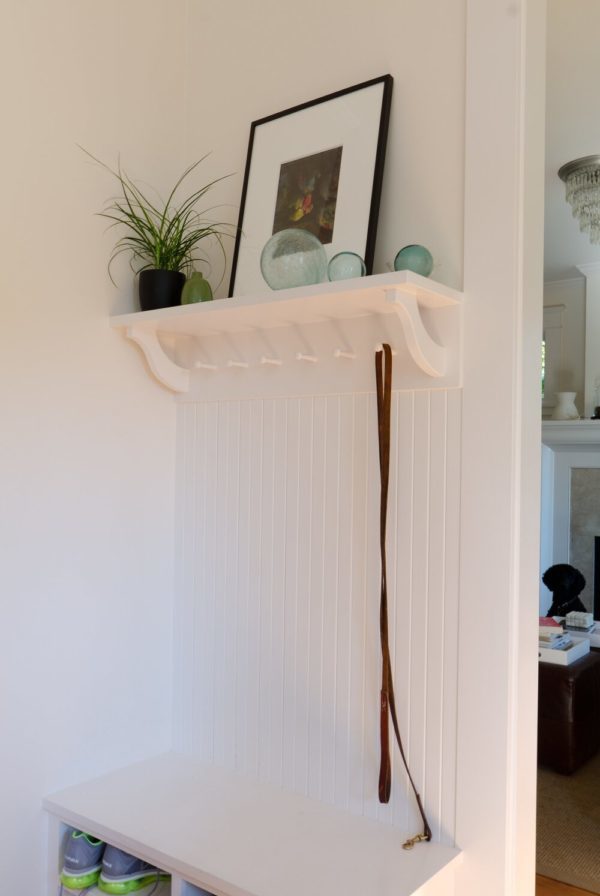
Enhance the architecture
Sometimes the best place to create a mudroom isn’t a separate room with a door to hide clutter behind, but instead is one of your home’s most visible areas. Our solution: make the “public” mudroom a beautiful, integrated part of the design.
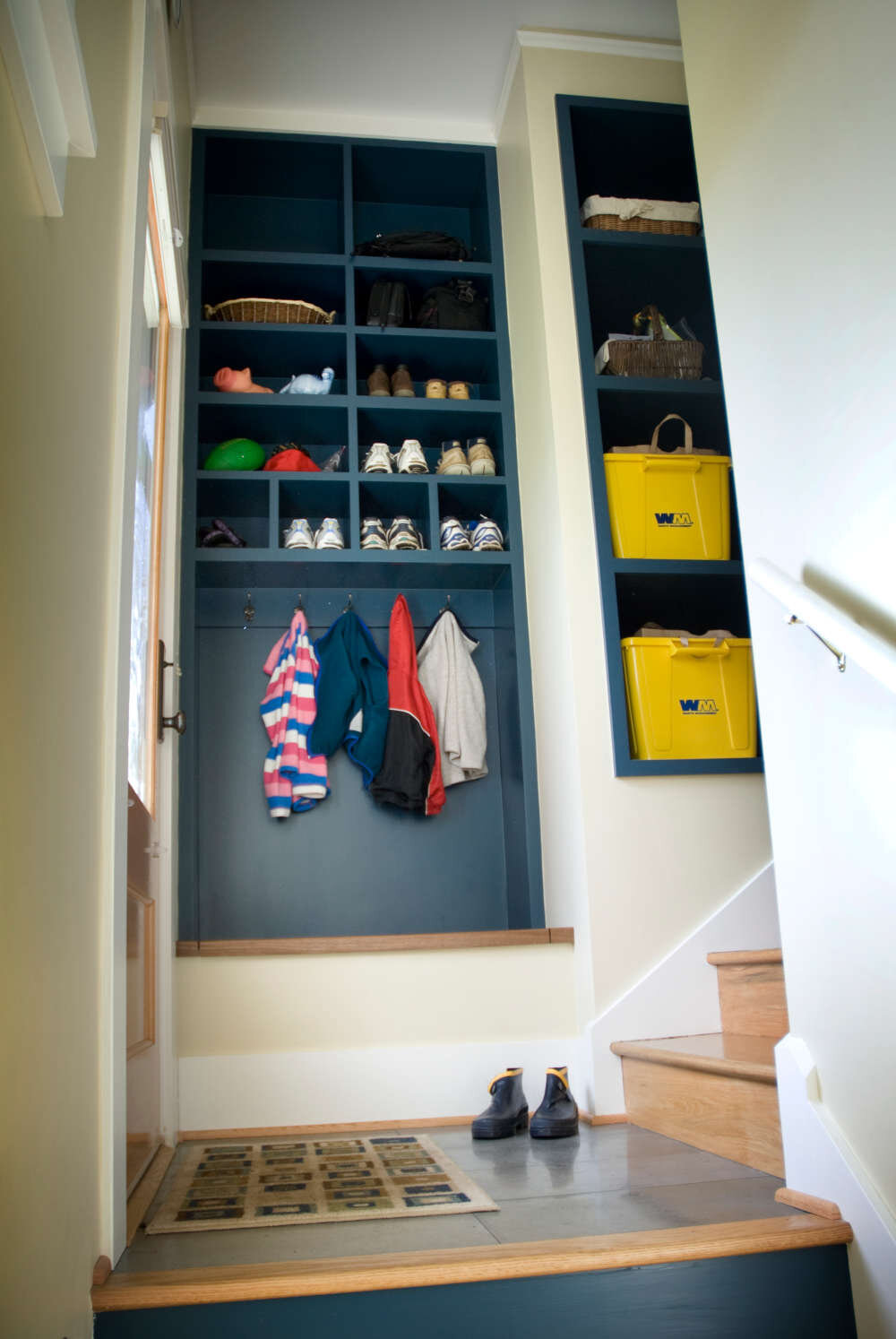
Build intentionally
The trick for making a mudroom work is customization for specific functions. For example, measure how big your recycling bins are so you can build a cubby that fits them perfectly. Do the same with bike helmets, backpacks, and umbrellas. Track what piles up daily in your home, focusing on cabinetry to hold these items first.
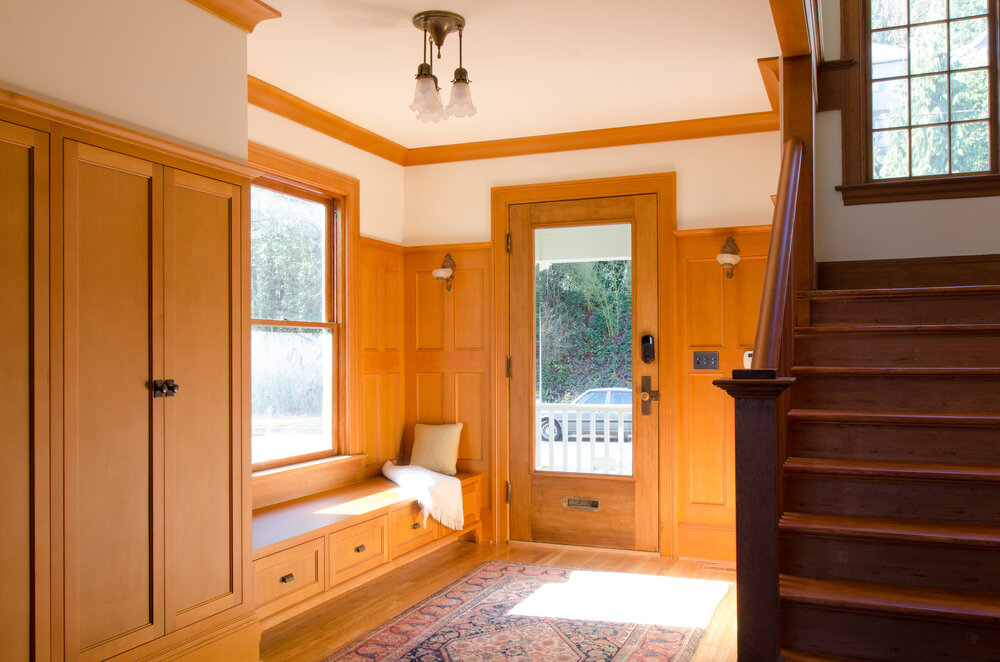
Front of house vs. back of house
What if you have two high-traffic doors in your home? Determine how you use each of them and build a spot to house the items specific for each experience. For example, the front mudroom can be used for visitors and seasonal needs while the back holds all the rest. Just be sure to keep pathways clear – benches and cabinets are best off to the side so there’s an unhampered area to take off shoes and coats.
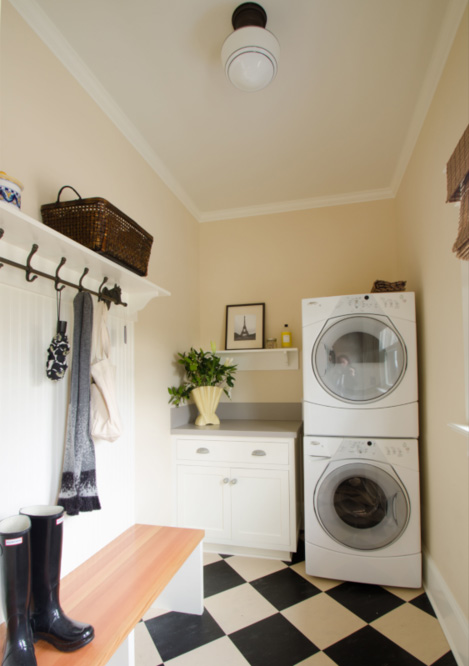
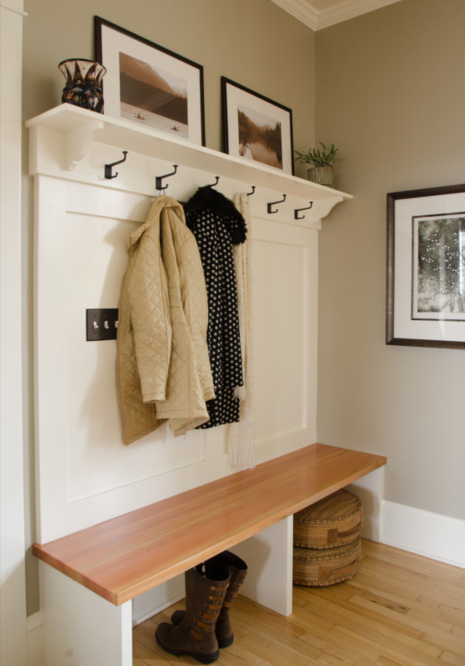
Closed vs. open
Do you prefer open or closed shelving? Determine whether you want open storage to access your things easily or if doors that hide clutter are more your speed. Don’t be afraid to combine both!
“Determine whether you want open storage to access your things easily or if doors that hide clutter are more your speed.”
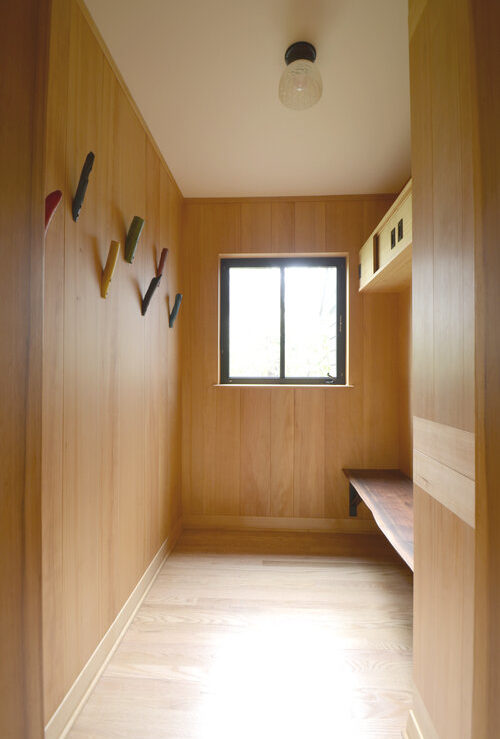
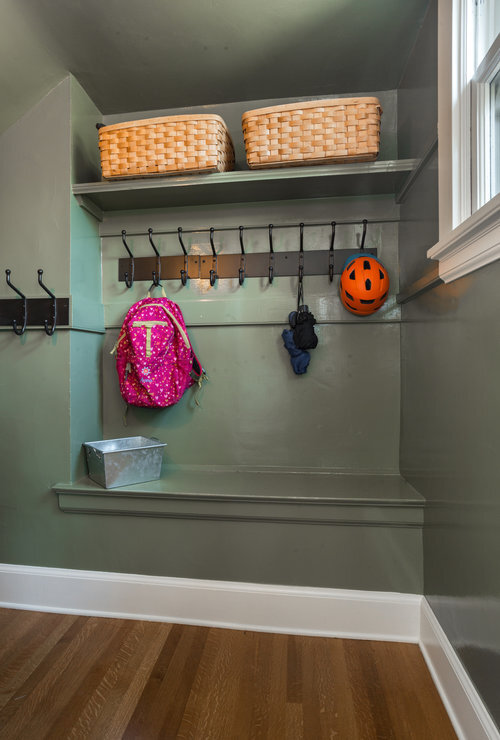
Finding a nook vs. finding a room
Sometimes a great little mudroom is hiding in plain sight. Don’t forget to look for space under stairs, in closets, and near wide halls.
Maybe the perfect mudroom is a room you never use. For one family, an old wood-paneled office was a room they all loved to look at, but rarely hung out in. With some careful surgery, we added a door that allowed easy access to the garage, incorporated built-ins to complement the original paneled walls, and designed the other half of the room for office functions.
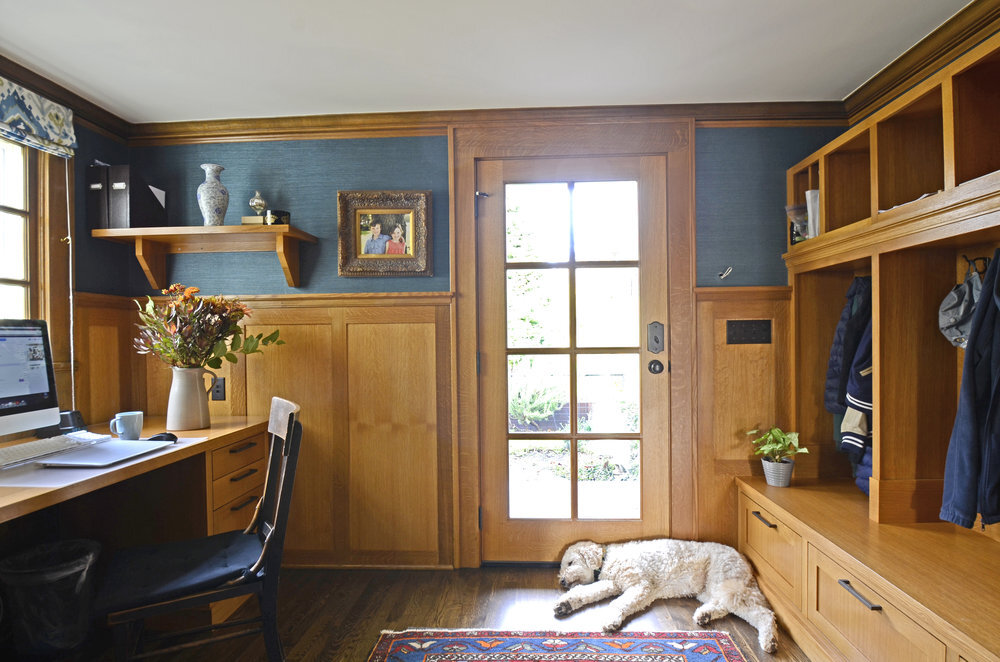
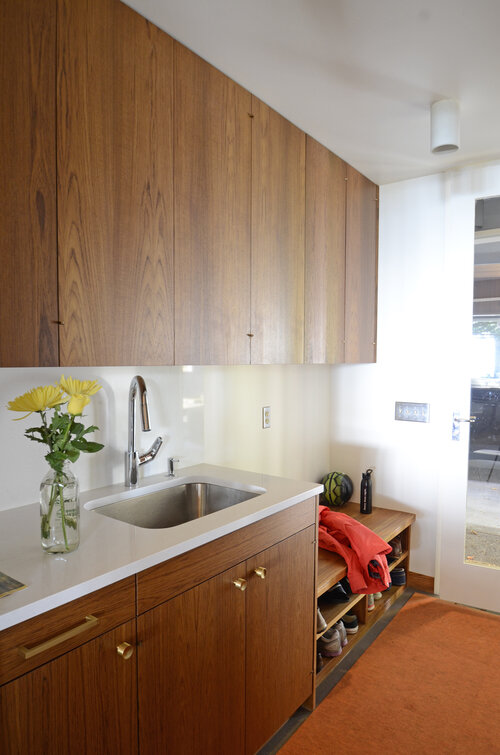
Add a sink
It may be a small luxury, but for some clients working a sink into the mudroom design is a dual-purpose life saver. Not only is it a place to clean up before heading into the house, but a bonus sink in the mudroom can be used for flower arranging, pet washing, or even a spot to brush your teeth on your way out the door.
“It may be a small luxury, but for some clients working a sink into the mudroom design is a dual-purpose life saver.”
House your tech
This is one of the easiest to accommodate but also one of the easiest to forget about. Adding a small cubby or shelf with an outlet allows your electronics to be corralled and charged. Homeowners with kids especially value having a designated spot for electronics that’s public and away from bedrooms. No more unauthorized screen time!
No matter how you choose to create your mudroom, the key is making it fit the needs of your family. Remember that you don’t need an entire room – be mindful about the space you have and your immediate needs, then build from there. Getting organized will not only save you time when heading out the door, it’ll help you relax knowing you have a special place for all your things.




